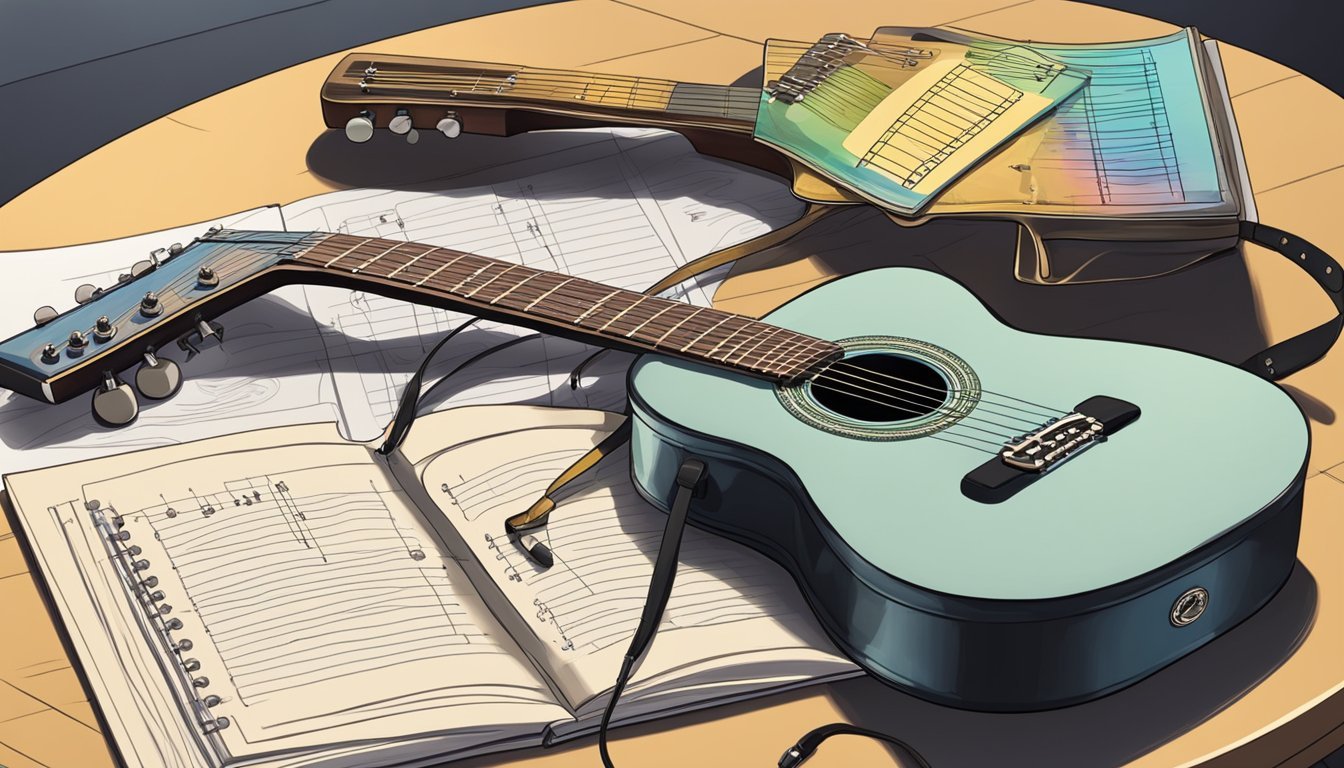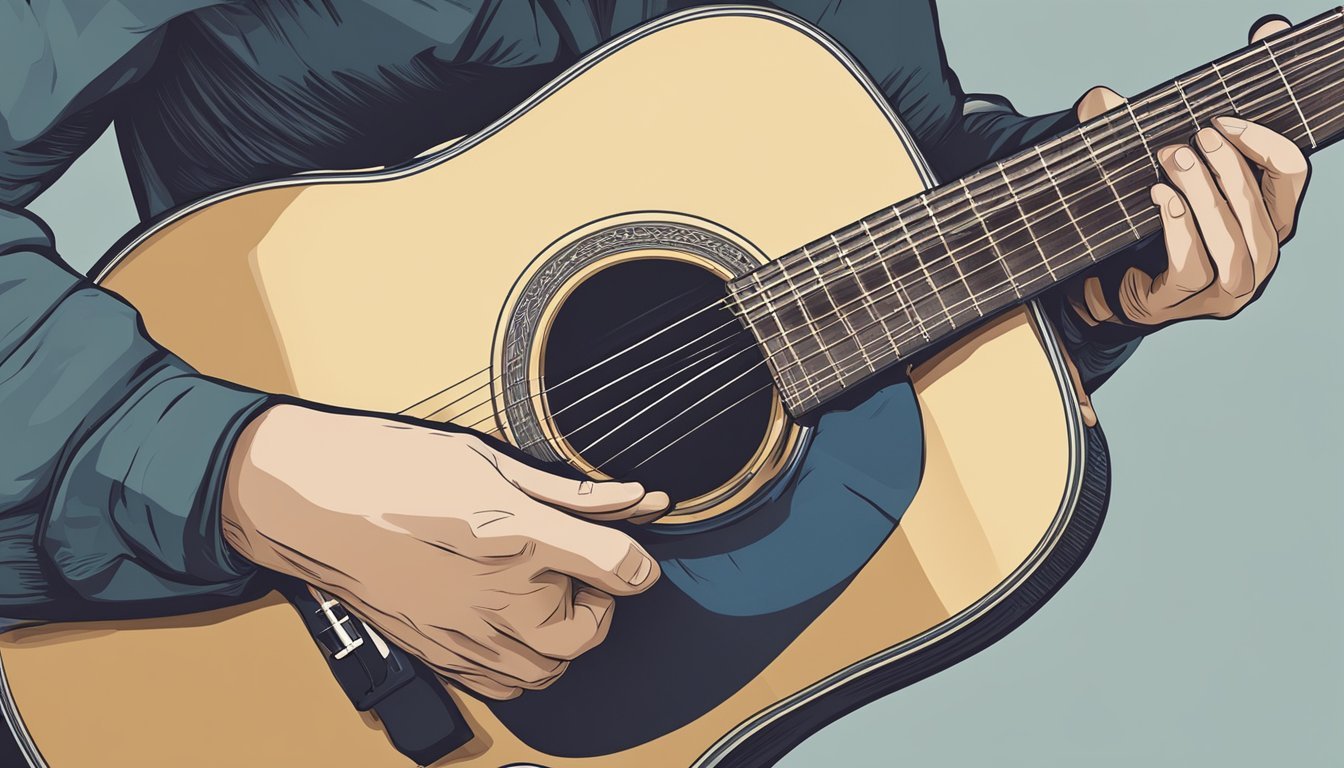Learning to play the guitar can be an exciting journey that opens up a world of music. You can start by getting familiar with your instrument and practicing some basic techniques that will lay the foundation for your skills.
Whether you want to strum along to your favorite songs or develop more advanced techniques, the key is to find a pace that works for you.

Understanding the essential parts of the guitar and how to hold it properly is crucial.
From tuning the strings to learning basic chords, each step will help you feel more comfortable.
The great part is that you can learn at your own pace, making it equally fun and rewarding.
By taking your time and exploring different styles, you will gain confidence and improve your playing ability.
Remember, every guitarist was once a beginner, so don’t be afraid to make mistakes along the way.
Key Takeaways
- Familiarize yourself with your guitar and its parts.
- Start with basic techniques and chords for a solid foundation.
- Progress at your own pace to keep the learning fun and rewarding.
Getting to Know Your Guitar
Understanding your guitar is key to becoming a better player.
Let’s break down the important parts of the guitar and learn how to keep it in top shape.
Anatomy of the Guitar
Your guitar has many parts that help you create sound.
Here are some of the main components:
- Headstock: This is at the top of the guitar. It holds the tuning pegs that adjust string tension.
- Tuning Pegs: These are what you turn to tune the guitar. They’re essential for getting your sound just right.
- Nut: Located between the headstock and the fretboard, the nut keeps the strings in place.
- Fretboard: This is where your fingers press down on the strings to create different notes. The frets are the metal strips along the fretboard.
- Body: The body can be acoustic or electric. Acoustic guitars have a hollow body that amplifies sound, while electric guitars need an amplifier.
Understanding these parts will help you play better and maintain your guitar over time.
Tuning and Maintenance
Tuning your guitar correctly is crucial for great sound.
Most guitars use standard tuning, which means the strings are tuned to E, A, D, G, B, and e from thickest to thinnest.
A guitar tuner helps you get each string in tune easily.
Regular maintenance keeps your guitar in shape.
Change your strings when they sound dull or feel rough.
Use a soft cloth to clean the fretboard and body to remove dirt.
Learning how to tune and care for your instrument is a big part of your musical journey.
By knowing how each part functions and keeping your guitar in good condition, you’ll enjoy playing more.
Fundamentals of Playing
Getting started with a guitar means learning some essential techniques.
Knowing how to hold your guitar and strum effectively is critical for beginners.
Plus, understanding chord progressions will help you play your favorite songs.
Holding and Strumming
First things first, you need to know how to hold your guitar properly.
Sit or stand up straight, resting the guitar on your right leg if you’re right-handed.
Use a guitar strap to keep it secure while playing.
Once you’re comfortable with your posture, familiarize yourself with the fretboard and the basic chords.
This foundational knowledge will be essential as you progress to learning songs, including how to play Creep on guitar.
Practice regularly and don’t hesitate to seek out tutorials or guidance to enhance your skills and confidence.
Your left hand will need to fret the strings, so make sure it’s relaxed, allowing for easy finger movement.
When it comes to strumming, practice holding the pick between your thumb and index finger.
Keeping your other fingers free will give you better control.
Start with simple downstrokes to get a feel for the rhythm.
Explore different strumming patterns as you get more comfortable.
Try using online guitar lessons to learn new techniques.
Chord Progressions and Patterns
Now, let’s dive into playing chords.
Familiarize yourself with basic guitar chords like G, C, and D. These chords are your building blocks.
Use chord charts to visualize finger placements.
Practice switching between them smoothly.
This will improve your finger independence and make playing songs much easier.
Start with simple chord progressions like G-C-D or C-G-Am-F. Repeat these patterns until they feel natural.
As you practice, pay attention to your strumming pattern.
Mixing up your strums adds variety to your playing and helps you develop your unique style.
Consider finger exercises to boost your strength and agility.
Advanced Techniques

As you advance in your guitar journey, learning specific techniques can elevate your playing.
You’ll dive into lead guitar basics and discover effective practice strategies to improve your skill set.
Lead Guitar Basics
Lead guitar focuses on playing single notes, often in styles like rock and blues.
Start by mastering guitar tabs, which help you find the right notes and understand the song structure.
A common technique is using a capo to change the key of a song without altering the chord shapes.
This is especially useful when playing along with others.
Familiarize yourself with power chords for that rock sound.
These are simple yet powerful, making them perfect for riffs like the ones you hear in your favorite songs.
You can also try picking single notes to enhance your solos.
Practice Strategies
To get better, set aside dedicated practice time.
You can learn at your own pace by breaking down complex pieces into smaller parts.
Start with simple rock riffs and gradually incorporate more challenging sections.
Using video lesson resources can be especially helpful.
Watching a skilled player demonstrate techniques helps you grasp complex movements.
Consider keeping a practice log to track your progress.
Note which songs you want to learn and record your practice time.
This helps you stay motivated and see how far you’ve come.
Frequently Asked Questions
Here are some common questions that many beginners have when they start learning guitar.
You’ll find useful information about getting started, practicing, and useful resources.
What are the first steps for a beginner learning guitar?
Start by choosing the right guitar for you, whether it’s acoustic or electric.
Next, learn how to hold the guitar properly and how to tune it.
Familiarize yourself with the basic parts of the guitar, then practice some easy strumming patterns.
Can I learn guitar on my own, and if so, how?
Yes, you can learn guitar on your own!
Use online resources, such as videos and tutorials, to guide you.
Setting a regular practice schedule and being consistent will also help you improve over time.
What are some easy chords to start with for new guitar players?
Begin with basic chords like G, C, D, and Em.
These chords are commonly used in many songs.
Practicing these will help you build your finger strength and get comfortable with switching between chords.
Are there any good beginner guitar lessons available online for free?
Definitely! Websites like HelloMusicTheory offer free lessons for beginners.
YouTube is also packed with tutorials that cover everything from basic chords to strumming techniques.
How long does it typically take to learn the basics of playing guitar?
It varies for everyone, but most people can learn the basics in a few months with regular practice.
Consistency is key, so try to practice a little every day rather than cramming once a week.
What’s the best way to practice guitar for beginners?
Focus on short, daily practice sessions instead of long ones.
Spend time working on chords, strumming, and playing simple songs.
Don’t forget to take breaks to keep your hands relaxed and avoid frustration!

